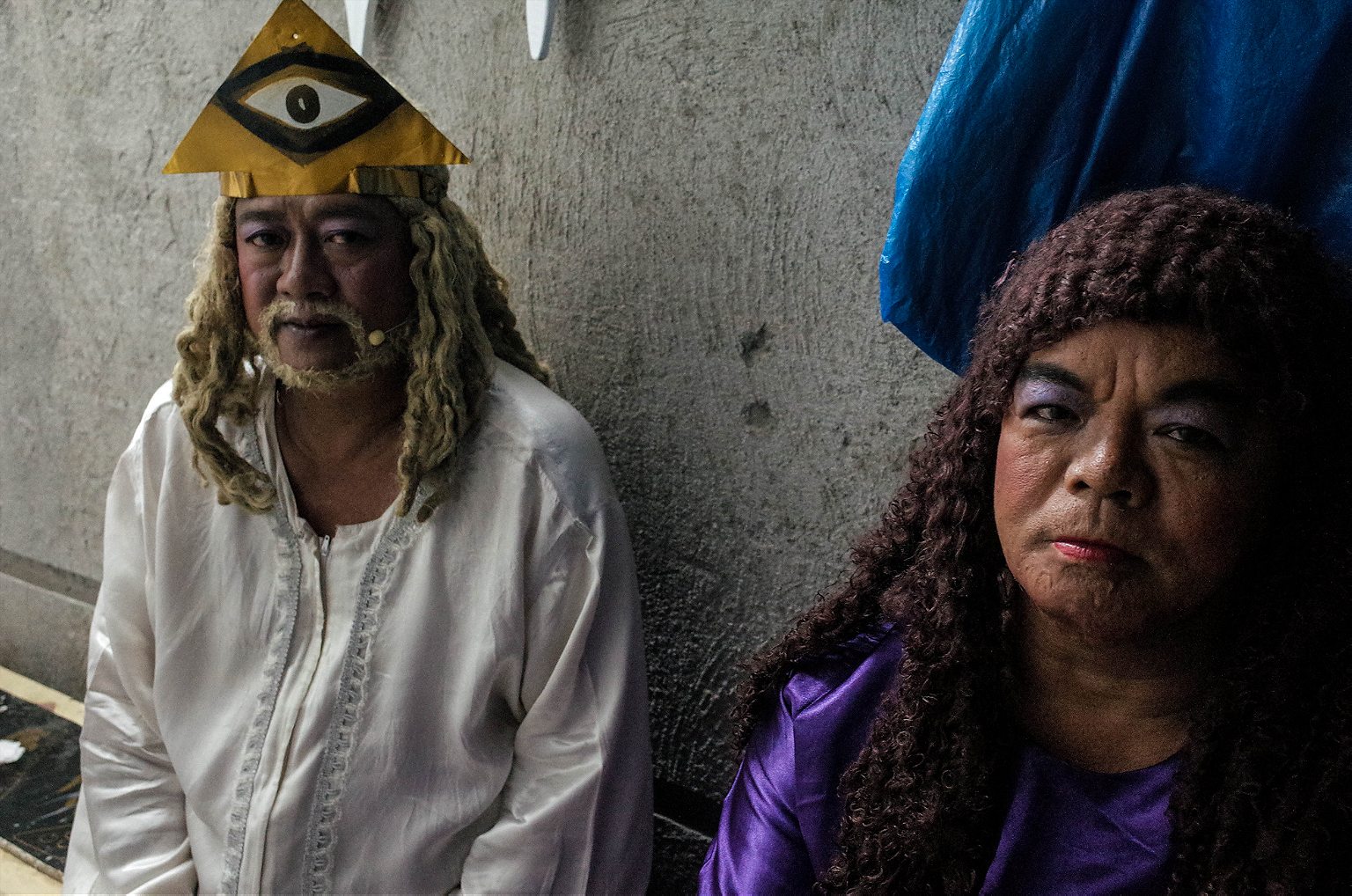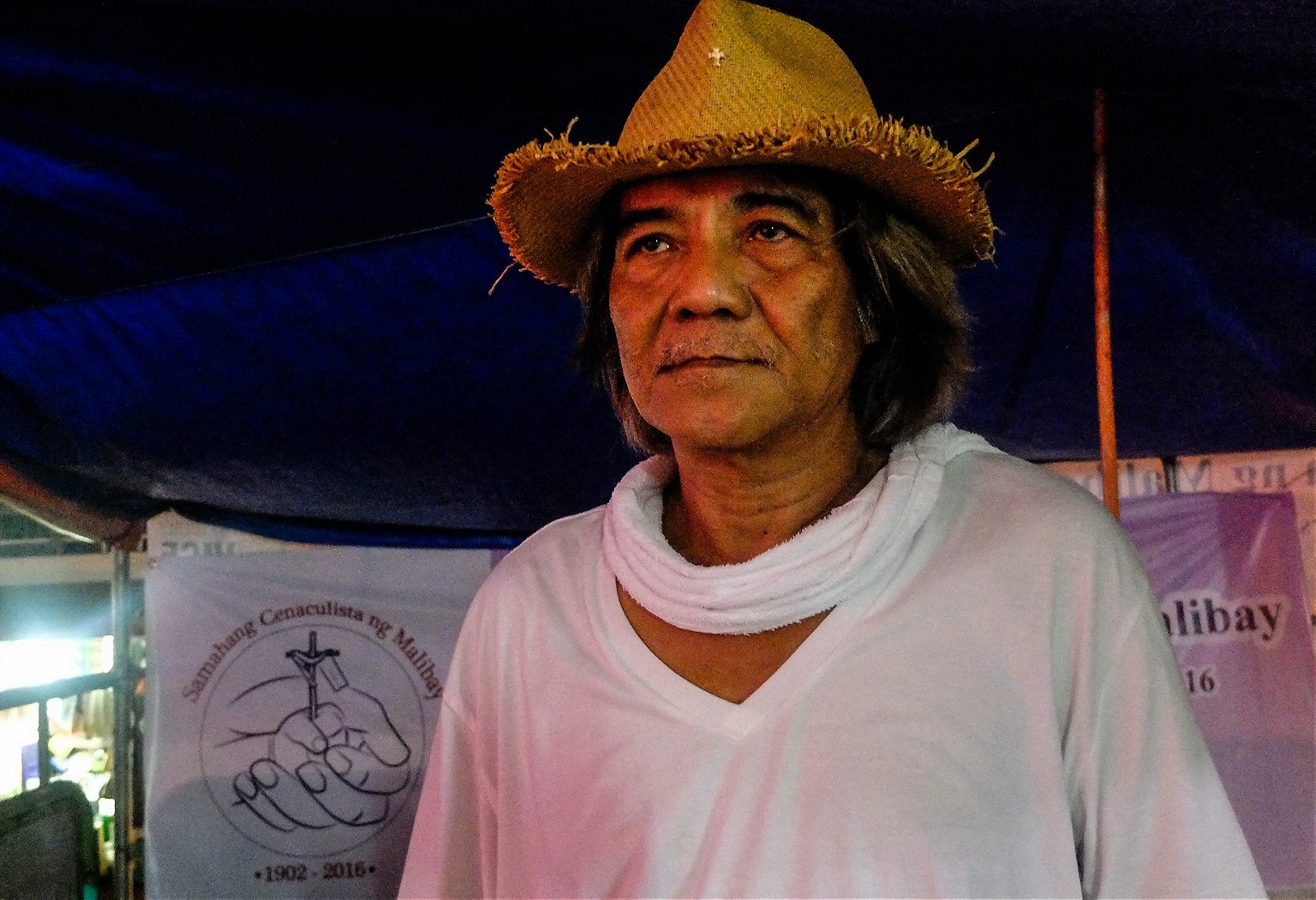The Malibay Cenaculo is the longest running Lent celebration of its kind, but few outside the gritty city have heard about it.
Penitence came on a hot and humid summer night. I was lost, walking through what seemed to be an endless concrete labyrinth, when I stopped to catch my breath and ask a group of women for directions to the town plaza. “You’re still quite far,” one of them told me. Around us the road was busy and narrow; I trotted on, side-stepping potholes and ignoring jeepneys decorated with such slogans as “God bless our trip” and “Jesus loves you.”
Pasay is a dense city south of Manila named after a princess of the long-gone Namayan Kingdom. A trade hub during the 12th to 14th centuries, merchants from across Asia came to barter their wares with the natives. It’s also the city I’ve called home for the past eight years after moving to the Philippines from India. I was born in Manila to a Filipino mother and Indian father, and felt it was time to revisit my roots. Pasay might not seem like the obvious choice of a place to settle, but I liked its grit and close proximity to the airport. These days, Pasay could be anywhere in the world, with its casinos, luxury hotels, and shopping centers. But when you look hard enough, the city still has its secrets and delights.
The township of Malibay was annexed by Pasay in 1903. Through Spanish colonization, Catholicism became the prevalent religion in the Philippines—it is the only predominantly Christian nation in Asia. Locals take pride in religious festivals celebrated during Lent leading up to Easter Sunday, and each town has its own patron saint.
The Malibay Cenaculo passion play is the oldest of its kind still running in the Philippines. The word “cenaculo” (or cenacle) is derived from Spanish and describes the place where Jesus and his disciples celebrated the Last Supper. The play began along the outskirts of Pasay in 1902 and is roughly based on Filipino Gaspar Aquino de Belen’s poem “Pasyon,” which he wrote in 1703. The poem describes Christ’s passion, death, and resurrection.

“Pasyon” is read frequently during Holy Week in the Philippines. The recitation can span several days leading to Black Saturday, but usually ends on Good Friday at the time when Jesus died on the cross. It is chanted from beginning to end, without pause. The uninterrupted recitation is called the “pabasa” (reading). The non-stop dramatic chant is conducted by devotees who read it in shifts. The oral tradition was passed throughout the country by travelling performers. The actors and readers commit to this vow (panata) and consider it as an offering or a form of self sacrifice.
The Malibay Cenaculo was initiated by three men who played in the “Tres Caida” (“The Three Falls of Christ”) along the streets of Pasay in 1902. Their descendants live in Malibay to this day. The town’s patron saint is San Juan Nepomuceno (The Martyr of the Holy Confession), who protects the faithful from gossip and floods. The 18-inch statue was a gift from a Spanish couple to a Malibay resident in the 1800s. They have sworn to continue the rites as they sense it has contributed to the strength and longevity of the community.
The roles are taken seriously: generations of actors volunteer each year to the Cenaculo. It is exclusive to residents. A number of Filipino celebrities have attempted to take part, but they are always turned down. One needs to be born in Malibay and have a family member who has participated in the passion play before.
A friend recommended the play to me a few years ago. During most Easter breaks I head to the nearest beach, but this year I decided to spend the holiday in the city to see the play for the first time. The Cenaculo is traditionally performed on stage before a curtain and takes a minimum of eight days to present. The daily performances begin at the unusual hour of 9 pm and last for an hour. The online information was misleading and suggested only to visit the streets of Malibay at noon on Good Friday. Despite it being celebrated for over a hundred years, very few people know of its existence.

During the Easter holidays, Manila becomes a ghost town as people make pilgrimages to the provinces to witness the commemoration and gory re-enactment of Christ’s crucifixion and death. The devout and the fanatics spend their Good Friday self–flagellating or nailing people to the cross—something the Catholic Church has frowned upon for years.
In Malibay, I was pointed to a large unfinished building with steel rods sticking out; dance music blared in the background. A makeshift dressing room was set up along the main street with walls of galvanized iron sheets and an old rickety wooden door. I knocked, and a middle-aged man peeked through as motorcycles whizzed by. He wore garish makeup—fluorescent pink blush on his cheeks, blue and gold eyeshadow heavily painted on his lids. His wig looked extremely itchy. The curls cascaded down into a loose braid. A gold chain lay snug around his thick neck, and his arms were covered with crude tattoos of Jesus, a cross, and Mary. Could this be Judas? I wondered.
I asked him if I could watch the play. He agreed, and quickly led me through the crowd, which was made up of people of all ages. A select few sat on plastic chairs while an array of gaudily-colored costumes lay in a pile. A group of make-up artists worked in a frenzy attaching fake beards with white glue and sawdust. It was festive and chaotic.
I was introduced to the Cenaculo’s president, an elderly man in a straw cowboy hat named Mr. Araneta. The stress of the production showed through on his face. “It is through the grace and guidance of the Holy Spirit that you have come to us tonight!” he said loudly in Tagalog, raising his hands in the air. The play had been running for over four nights, and no outsiders had come to watch, he said—only Malibay locals.

A group of teenagers dressed as Roman soldiers resembling the cast of Spartacus were dispatched to collect the statue of Malibay’s Patron Saint San Juan Nepomuceno from the local parish. Onlookers gawked at the soldiers as they weaved their way to the wet market on the way to the church. After fetching the statue, it would be brought to the main stage in the town plaza. After each performance, when all cast members have received its blessings, the image is returned to the church.
The local marching band that accompanied us to the church was established in the 1960s. It included a full wind section that provided the music for the event. Like the actors, a family of musicians continue the tradition. As the head of the crusade brought their patron saint to the stage, the band began to play popular Beatles songs.
The curtains were drawn from the town plaza’s stage. The set was heavily decorated with props and vividly painted murals. Jesus came out with his Apostles, marching to a funereal beat. The chants transfixed the crowd. The director spoke to them through a split in the curtain, reading the lines out of a heavy photocopied book.
During the first intermission, I tried to talk to some of the characters in the play. I met the Southeast Asian incarnations of Judas, Mary, and the Apostles. I spoke to a wiry man dressed in black. He had a headband with two horns and a long tail connected to his dark pants. It was the devil himself, cigarette in hand. “We are all descendants of the original members. As long as we can, we will continue,” he told me.

Even though the Philippines’ National Commission for Culture and the Arts recognizes the Malibay Cenaculo as the longest running passion play in the country, it receives very little outside financial help. The local foundation relies on donations to stay afloat, covering costs of the production and food to feed the cast.
“I’ve played Jesus for almost 20 years, it is my vow,” said a retired nurse named Jun Taytay.
I sat next to Jesus. A rickety fan was placed close to his face to help dry his woolly beard. His thick wig barely moved with the wind. He told me that a year ago he could barely walk—a back injury had left him partly immobile. He lifted his robe to reveal a metal brace strapped around his waist.
I asked how his back felt today.
“Great!” he said as he stood to return to the stage. “With faith, nothing is impossible.”